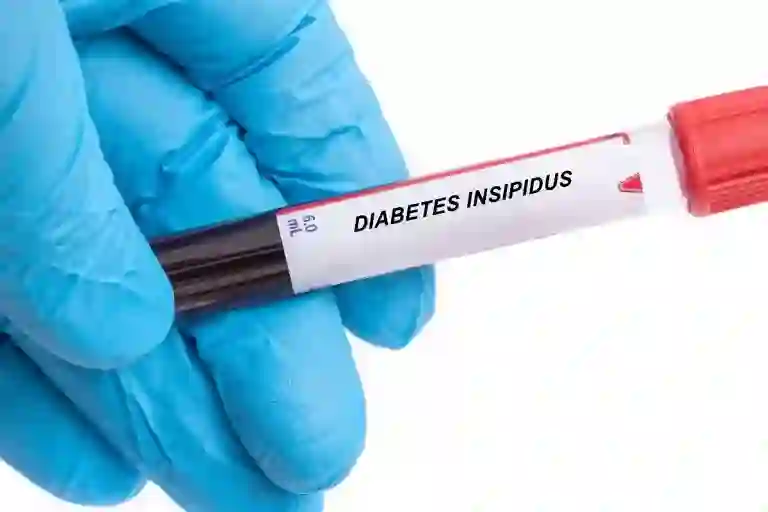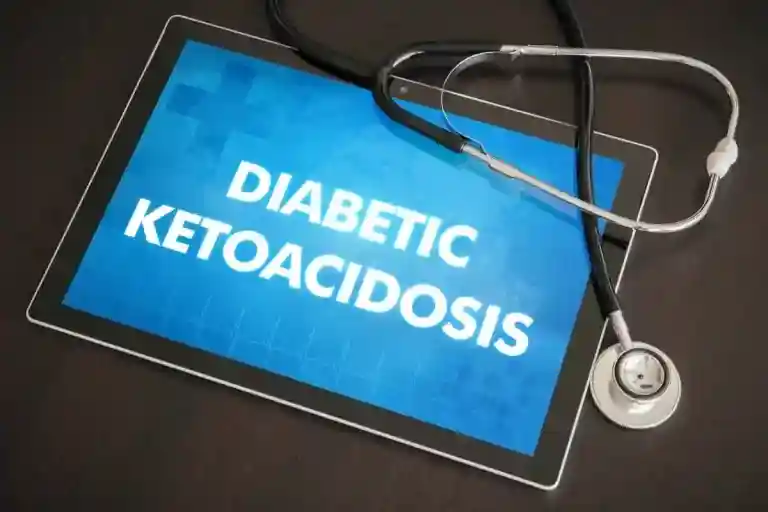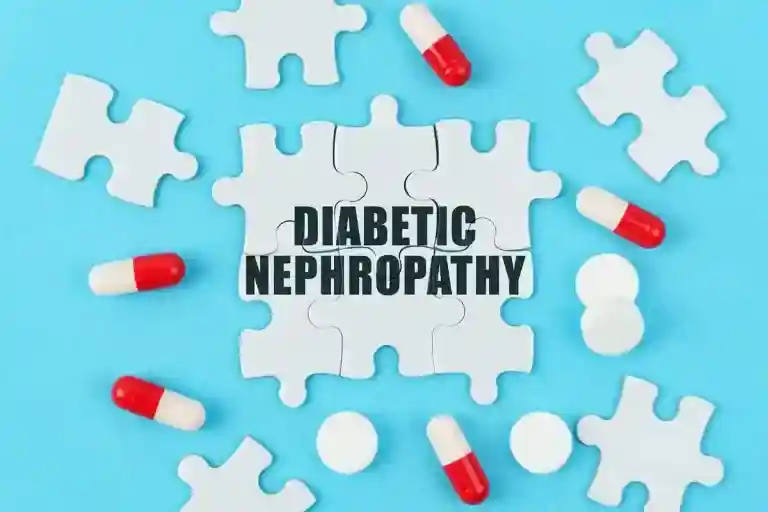Diabetes Insipidus, also known as Diabetic Insipidus, is a rare, serious medical condition and requires comprehensive medical treatment. In Diabetes Insipidus, the body produces excessive amounts of urine and cannot properly store water. It is why the patients consume excessive amounts of water due to persistent thirst caused by lack of water in the body.
Diabetes Insipidus is primarily caused by an imbalance in the production of a hormone known as Antidiuretic Hormone (ADH). This imbalance occurs when either the body doesn’t produce enough ADH or the kidneys do not utilize ADH effectively. It can be long-term or short-term, mild or severe, depending on the underlying cause.
It is to be noted that although the terms “Diabetes Insipidus” and “Diabetes Mellitus” may sound similar, they are not related. Diabetes Mellitus is a medical condition that is characterized by elevated blood glucose levels. It is a relatively common condition and is often referred to as simply diabetes.
Types of Diabetes Insipidus
Central Diabetes Insipidus
Central Diabetes Insipidus can be a hereditary condition or the result of damage to the hypothalamus, pituitary, or Hypothalamic-Pituitary-Adrenal (HPA) gland. A surgical procedure, tumor, head injury, or other medical condition can lead to such a condition. The damage to the hormone production, storage, and release of the hormone ADH has a direct impact on the condition. Additionally, the condition may be caused by an autoimmune response causing your immune system to attack the cells that produce ADH.
Nephrogenic Diabetes Insipidus
This disorder is caused by an underlying kidney disorder that impedes the proper functioning of ADH. Kidney disorders can be hereditary, the result of a chronic kidney disorder, or the result of the administration of antiviral drugs.
Gestational Diabetes Insipidus
It is a rare condition that is only present in pregnant women. It is caused by an enzyme produced by the placenta that destroys ADH in pregnant women.
Primary Polydipsia
Dipsogenic Diabetes Insipidus is another name for Primary Polydipsia, which is characterized by persistent thirst and excessive fluid consumption. It can be attributed to damage to the hypothalamic system responsible for regulating thirst. Additionally, this condition has been associated with mental health issues, including Schizophrenia.
How is Diabetes Insipidus diagnosed?
For Diabetes Insipidus diagnosis, our world-class physicians at Wockhardt Hospitals may perform a variety of medical tests. Additionally, they may determine the type of diabetes and the underlying cause of the condition.
Diabetes Insipidus diagnosis can be done by taking certain tests, such as:
- Water Deprivation Test – For this test, the individual must stop drinking fluids for a period of several hours. During this test, doctors will measure changes in the patient’s body weight, the amount of urine the body produces, and the concentration of urine and blood. The doctor may also measure the concentration of ADH in the blood.
- Blood Test – Diabetes Insipidus can be diagnosed by monitoring blood levels of certain electrolytes, including sodium, potassium, and calcium.
- Urine Test – The purpose of a urine screening is to ascertain whether the urine is sufficiently diluted. Additionally, the test can measure the glucose levels present in the urine to determine whether excessive thirst and frequent urination are due to Diabetes Mellitus, as opposed to Diabetic Insipidus.
- Magnetic Resonance Imaging (MRI) – MRI is a type of imaging test that utilizes magnetic fields & radio frequencies to generate detailed images of the brain. This type of MRI can be used to diagnose conditions related to the hypothalamic and pituitary glands.
- Genetic Testing – Healthcare providers may recommend genetic testing if other members of the family have experienced excessive urination or been diagnosed with Diabetes Insipidus.
- Stimulation Test – In a stimulation test, the patient is given intravenous fluids that trigger the production of ADH in the body. After that, blood tests are done to determine whether the symptoms are due to Diabetic Insipidus (Hypoglycemia) or Primary Polydipsia (excessive fluid intake).
What is Diabetes Insipidus Treatment?
In Diabetes Insipidus disease, there is no effective treatment for the condition. However, there is a dedicated treatment available that can reduce the symptoms of the condition, such as thirst, reduced urine output, and dehydration. Diabetes Insipidus can be treated in various ways depending on the severity of the condition. If the condition is mild, the individual may only require additional water intake to prevent dehydration.
Diabetes Insipidus treatment varies depending on the type of diabetes a person has.
Central Diabetes Insipidus – If the underlying cause of Central Diabetes Insipidus is a malfunctioning pituitary or hypothalamic gland, such as a malignant tumor, it is typically treated at first. However, when additional treatment is necessary, a hormone, desmopressin or DDAVP (Nocdurna), is produced to replace the missing ADH and to reduce the amount of urine produced by the body. DDAVP is available in the form of a pill, a nasal spray, and a shot.
Nephrogenic Diabetic Insipidus – The treatment of this condition can be more complex and challenging. If the condition is due to a medicine, discontinuation of the medication may be beneficial. Replacing the medications may also reduce the symptoms. The healthcare provider may suggest the patient consume a diet with a low salt content in order to reduce the amount of urine produced by the kidneys. Treatment with Microzide (Hydrochlorothiazide) may be beneficial in alleviating the symptoms. Hydrochlorothiazide, a diuretic, causes the body to produce more urine; however, it can reduce urine output in some individuals suffering from Nephrogenic Diabetic Insipidus.
Gestational Diabetes Insipidus – Desmopressin is a hormone produced by the human body that is used as a treatment for Gestational Diabetes Insipidus. Most of the time, Gestational Diabetes Insipidus disappears after the birth of the baby, but it can return if the mom becomes pregnant again.
Primary Polydipsia – There is no treatment for this type of diabetic insufficiency. The only thing one can do is reduce their fluid intake. If diabetes insufficiency is linked to a mental health condition, treatment may reduce symptoms.
Lifestyle Modifications for Individuals with Diabetes Insipidus
In order to effectively manage and treat Diabetes Insipidus disease, lifestyle changes can be beneficial. One of the most important steps is to prevent dehydration. This can be achieved by taking water with one’s daily routine. The physician will advise on the amount of fluid to be consumed each day. Additionally, regular physical activity, a nutritious diet, quality sleep, and abstaining from smoking can all contribute to overall health. The doctor may also suggest a specific diet that is low in sodium and protein.
Diabetes Insipidus can last a lifetime; however, an individual will be able to control their symptoms through regular monitoring and regular fluid intake. By adhering to the guidelines of their health care provider and managing their symptoms, the majority of individuals diagnosed with Diabetes Insipidus are able to avoid severe complications and lead a normal life. Diabetes Insipidus patients should seek immediate medical attention if they experience sudden dizziness or disorientation.
Wockhardt Hospital’s Diabetes & Endocrinology Department is one of India’s leading hormonal health practices. We provide comprehensive end-to-end treatment and diagnostics for all hormonal disorders. Schedule an appointment with us to manage your condition effectively.


















